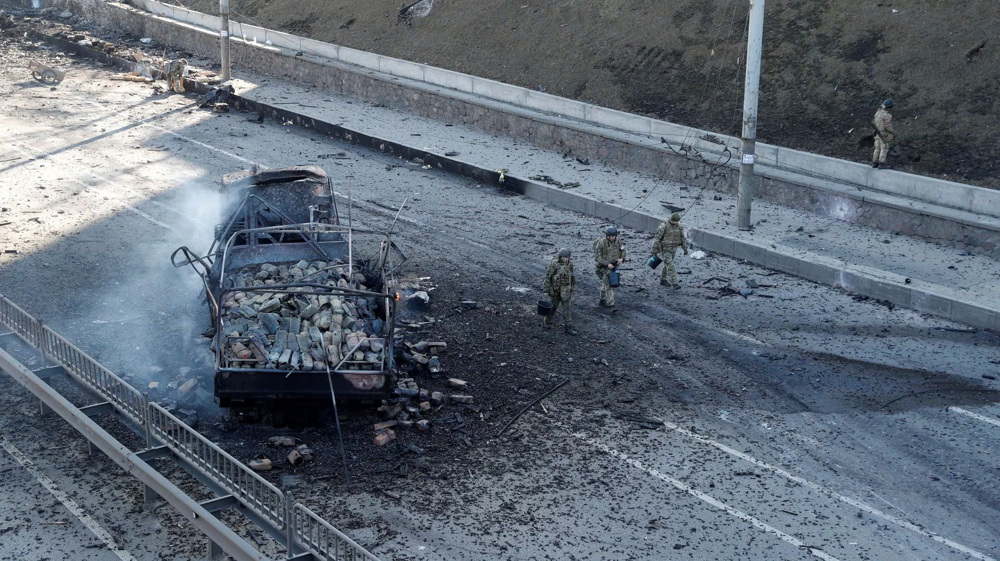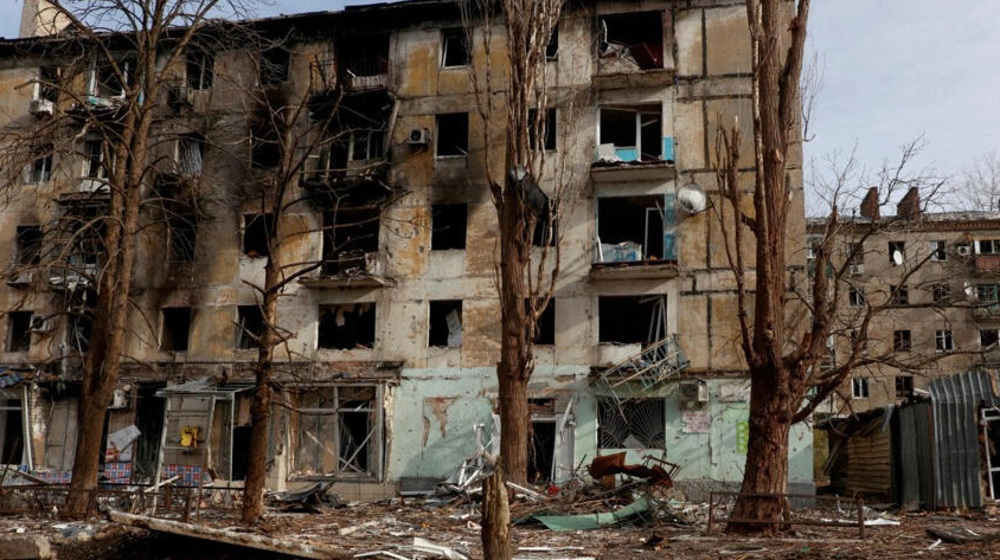Report: US using Ukraine war as 'research opportunity' for future plans
US military planners are using the Ukraine war as "an active and bountiful research opportunity" to prepare for a conflict with more sophisticated adversaries such as Russia or China, The Washington Post says, citing officials.
The paper cited a classified year-long study on the lessons learned from both sides of the bloody campaign, saying it will help inform the next National Defense Strategy, a sweeping document that aligns the Pentagon’s myriad priorities.
The study was led by 20 officers who examined five areas: ground maneuver, air power, information warfare, sustaining and growing forces and long range fire capability, the Post said.
“We immersed them in this conflict to make sure they were understanding the implications for warfare,” a senior unnamed military official told the newspaper.
Another official said the lessons taken from Ukraine stand to be “an enduring resource.”
"Ukraine has demonstrated that everything US troops do in the field — from planning missions and patrolling to the technology that enables virtually every military task — needs to be rethought," the paper cited the officials as saying.
Washington and its NATO partners have viewed Ukraine as a proxy war to weaken Russia. While the Biden administration has touted this policy as “for Ukraine,” it has severely harmed the country.
In the early months of the war, Kiev nearly reached an agreement with Moscow to end the conflict and Russian forces would withdraw to the pre-invasion lines. However, Washington and London pressured the Ukrainian leadership to abandon the diplomatic path.
Since then, Russia has annexed four Ukrainian oblasts and is advancing in key areas along the front. Ukraine is struggling to arm its forces and has suffered 500,000 casualties. Recently, the war has escalated to attacks on cities while Ukraine has suffered substantial infrastructure damage.
Last week, Russia achieved its first major territorial success in more than nine months in the Ukraine war, capturing the eastern city of Avdiivka.
A soldier who escaped the city told Associated Press that the Ukrainians were outnumbered five to one.
One Ukrainian told the news agency of Kiev’s increasingly aggressive conscription policy. “It’s a feeling that everyone wants to throw you in a meat grinder,” he lamented.
On Friday, Ukraine's armed forces said Russia had intensified attacks in the eastern Donetsk region, focusing on the town of Maryinka after capturing Avdiivka.
Ukraine's President Volodymyr Zelensky this week described the situation on the front as "extremely difficult" due to delayed Western supplies of military aid.
Meanwhile, more than 6 million Ukrainians who took refuge in Europe, the United States and Canada after the war broke out on Feb. 24, 2022 worry whether they will ever be allowed to settle in the long-term.
With no end to the war in sight, governments that offered them short-term help now face a much bigger bill than they expected and are looking to control the spending.
But Western arms manufacturers are reaping exorbitant profits from the prolongation of the war.
US weapons sales overseas rose sharply last year, reaching a record total of $238 billion. The US government directly negotiated $81 billion in sales, a 56% increase from 2022, the State Department reported.
The rest were direct sales by US military companies to foreign nations. Ukraine's neighbor Poland, currently on a drive to expand its military, made some of the biggest purchases to a tune of $30 billion from the United States.
On Wednesday, British arms maker BAE Systems reported record profit of £25.3 billion in 2023 amid Ukraine and Gaza wars
Make ‘right decision’ or face more US pressure, Rubio tells Venezuela’s Rodriguez
VIDEO | General Soleimani honored in Kashmir, Kargil
US, Israel waging ‘soft warfare’ to destabilize Iran after June defeat: Top general
VIDEO | Hundreds brave wind and cold to show solidarity with Gaza in Berlin
Israel kills more Palestinian civilians in Gaza amid ceasefire violations
VIDEO | Paris protest condemns US aggression against Venezuela
Pope Leo says Venezuela must remain an independent country
VIDEO | Germans condemn US aggression against Venezuela











 This makes it easy to access the Press TV website
This makes it easy to access the Press TV website